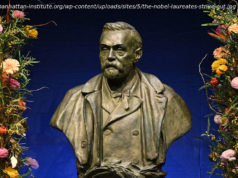Son of a Stalinist industrial apparatchik, Dr. Alferov shared the prize in 2000 with two American physicists who were attacking similar problems from the opposite side of the Iron Curtain.
Zhores I. Alferov, a Russian physicist who won the Nobel Prize for research that underpinned an array of inventions integral to modern life, from solar cells to DVD players to cellphones, died Friday night at a hospital in St. Petersburg. He was 88.
The death was announced by the leader of the Russian Communist Party, according to Tass, the Russian state news agency.
Dr. Alferov shared the Nobel in Physics in 2000 with two American physicists, Herbert Kroemer and Jack S. Kilby, who were attacking similar problems from the opposite side of the Iron Curtain in the 1960s.
Son of a Stalinist industrial apparatchik, Dr. Alferov maintained an ambiguous relationship with the United States throughout his life. He worked closely with American colleagues, but rejected market reforms in post-Soviet Russia and served in Parliament as a Communist Party deputy.
The three men separately pioneered the development of the so-called heterostructure semiconductor. Scientists had studied semiconductors — materials that conduct a relatively weak and controllable pulse of electricity — since the 1930s, famously focusing on silicon as the most useful. But the transit of electrons through a silicon wafer, known as a homostructure because it consists of one material, proved ineffective at releasing photons, whose energy can be converted to light in the form of a laser beam.
Dr. Alferov, working at a Leningrad institute whose more practical projects included helping to build the Soviet hydrogen bomb and nuclear submarine fleet, discovered that a “sandwich” of different materials, or heterostructure, could yield a continuous stream of photons without adding so much electrical current that it would heat the materials to extreme temperatures.
He hit upon the optimal combination of gallium arsenide with aluminum, and in 1968 made his first visit to the United States to deliver a paper summarizing his results.






